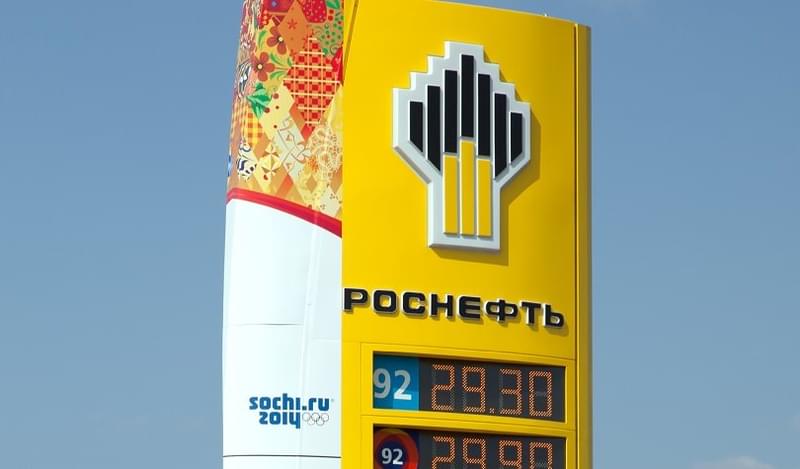Rosneft has approved a RUB1tn (US$16.55bn) debt issuance programme that will be rolled out in 2017, Russia’s biggest oil company announced in a statement.
“This programme will consist of bond tranches, as approved by the board. The RUB1tn represents the ceiling of the overall issuance, but there is no obligation to reach that target,” Rosneft spokesman Mikhail Leontiev said. He declined to reveal details of the size and date of specific issuances.
However, analysts at the ING Bank speculate that that bond program will be realised over the next couple of weeks, before 15 December, with the settlement date dictated by the government’s agenda to privatise 19.5% of its stake in the oil giant.
Rosneft, which is part state-owned, had US$3.8bn in debt repayments this year, and another US$12.9bn coming up in 2017.
Like many of the industry’s leaders around the world, the Russian firm has been struggling in the face of deflated oil prices, reporting a striking 77% drop in profits in the last quarter even as oil prices stabilised within the $39-49 range. Rosneft’s EBITDA also fell 15% in the last three months.
The decline is all the more striking as the company continued to ramp up production – with development drilling up 42% year on year – and investment, which rose 13% to US$2.6bn. Despite these efforts, production of crude grew by mere 2% in the quarter, while natural gas production fell by 2.5%; year-on-year oil production was up just 0.3% in September.
Despite a weak market outlook and poor performance in recent months, the company continued with planned acquisitions, including the US$3.5bn purchase of a 49% stake in India’s Essar in October. More recently, Rosneft completed the controversial “privatization” of another partially state-owned oil company, Bashneft, for US$5.2bn – a deal that is expected to bulk up Rosneft’s value ahead of its own planned privatization.
Devil’s in The Details
While the details of a potential issuance have not been revealed yet, the bond could boost the company’s cashflow in a period recently described as “difficult” by its head, Igor Sechin. This will include financing for overseas projects, new upstream business, and planned refinancing of existing debt.
According to Reuters, Rosneft also said its board had approved Gazprombank as the arranger for the bond issue, and the bank may buy up to RUB173.2bn roubles in Rosneft bonds.
But company representatives, speaking to local press, refused to confirm that the bond proceeds could go towards the share buyback, which the company is planning as part of the privatization agreement.
Analysts note that the eventual destination of the proceeds is largely irrelevant: “Once the money is in the budget, one cannot really tell which portion goes where,” said Ildar Davletshin, a lead oil analyst at Renaissance Capital.
“There are two main reasons for the issuance,” said Davletshin. “One is simple refinancing, as there is an outstanding repayment to the value of around US$10bn. The second, crucial, reason is the upcoming privatization of Rosneft itself. They will need to buy their own share from the government for around RUB700bn.”
“If you add all those sums together – Bashneft, Essar Oil, debt refinancing, privatization - the size of the bond actually doesn’t seem big at all,” the analyst added.
Inspecting the limited information released about the programme, Russia-based ING analyst Egor Fedorov comes to a similar conclusion.
“Given Rosneft’s current liquidity position and its intensive M&A transactions through 4Q2016, as well as the expected privatisation of 19.5% of Rosneft’s shares, we might assume that the RUB1,071bn bond programme was arranged mostly to fund a potential liquidity gap as a result of a purchase of 19.5% of Rosneft’s shares from Rosneftegaz,” Fedorov proposed.
The RUB1tn issuance carries unwelcome connotations with a similar action Rosneft took in late 2014. The company, placed under US sanctions after the Crimea crisis, was struggling to source funds for a US$7bn payment to western banks, coming due in December 2014.
Its solution was to issue nearly US$1tn of rouble-denominated bonds, which were used as collateral by a local bank to borrow around US$15bn from the Central Bank of Russia, which then lent the money on to Rosneft.
“A bond placement programme worth RUB1071bn as well as bond placement programme worth RUB625bn in December 2014 will have non-market nature while Rosneft is under EU and US sanctions,” Fedorov explained. “The Russian investor base is relatively narrow and Russian state and private banks also cannot use its short-term, although relatively abundant, liquidity as a source of funding for purchase of Rosneft bonds.”
“As in December 2014, the final creditor of Rosneft in this transaction will be the Bank of Russia via a repo scheme with Russian banks. Some part of the bond programme might be purchased by Rosneftegaz. However, in our view, funds of Rosneftegaz might be provided in addition to the bond programme.”
Déjà Vu?
Notably, back in 2014, the company vehemently denied that the bond sale proceeds were used to purchase FX for repaying western creditors, yet the issuance, following a huge dive in oil prices, saw the Russian currency plummet from 34 to about 70 roubles per US dollar.
The Russian economy has shown many signs of recovery since then, with the rouble appreciating to around the 64 per US dollar mark. It could be strong enough to withstand a substantial ruble emission, which has been discussed as a potential option for the CBR to fund the bond buy-out. So, while most analysts are aware of the parallels with 2014, they point to important differences.
“I do think this issuance will be similar to what we saw in 2014 in structural terms, with certain types of bonds allowing for repo financing by local banks. Essentially that would mean borrowing from the government, as happened in 2014,” Davletshin commented.
But after that deal we saw a lot of speculative activity in the market and a run on the currency, so the effect was more psychological, he explained. Russian market liquidity is lower than it was nearly two years ago, largely because inflation is quite high and real income has been sagging, so an emission of local currency may not actually be that damaging.
Fedorov admitted that predicting the effects of this programme will be difficult until the notes are issued.
“Rosneft’s RUB1,071bn bond programme realisation would be a rather USD/RUB neutral transaction in comparison to the December 2014 RUB625bn bond placement, when RUB-denominated loan facilities were probably used to fund the liquidity gap following huge external debt payments.”
Like the Russian economy, Rosneft’s fortunes have improved more recently, particularly at the beginning of this year. Its market capitalization topped that of Gazprom for the first time in April, and in June, Sechin said he thought his company could be worth as much as US$130bn, twice its current value.
“Rosneft’s transaction will not significantly affect the Russian domestic bond market as soon - the transaction will have a non-market nature and will be made “out of the market” with the CBR and/or Rosneftegaz as final creditors,” ING expert explained in an email, adding that there will not be much of an impact on the company’s standalone credit rating.
Davletshin, too, suggested that market access is likely be limited for this issuance, as it will be more of a “technical transaction,” and as such is not expected to distort the price of existing securities.
“If the issuance comes to the real market, there may be some readjustment in pricing and yields. But even if we look at Gazprom’s recent bond sale, where yields hovered at less than 3%, there is clearly still appetite for Russian corporate debt.”
So far, both experts agree, there are more questions than answers: How strong, and more importantly, how readily available, is Rosneft’s liquidity? How many and what kind of issuances will we see? Will the proceeds go towards purchasing its shares from Rosneftegaz, or towards buying dollars to refinance existing debt? Will Rosneftegaz, or the CBR, or both, contribute to the privatization deal, and if so, would it be through loans or as participants in the bond programme? Post-privatization, will the company re-sell its stake to the public? And when? The cloud of uncertainty is hovering over a potentially lucrative transaction, or a total flop – it is impossible to say at this stage.
But some of the inherent conditions leading to the previous debt sale and the ensuing currency collapse – namely, low oil prices and limited access to international debt markets – are still in place. As a result, investors are likely to approach this deal with a healthy dose of scepticism and caution.









